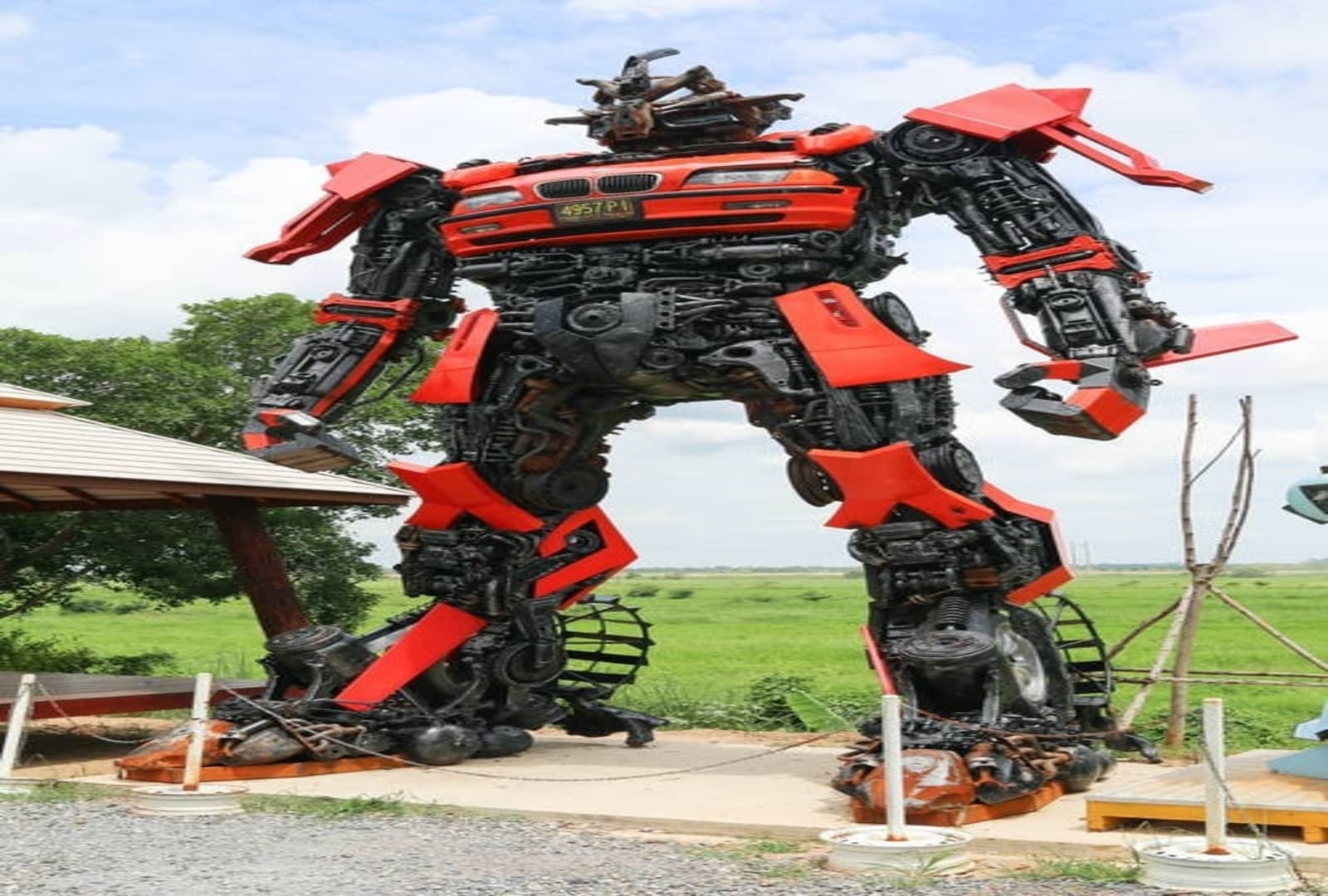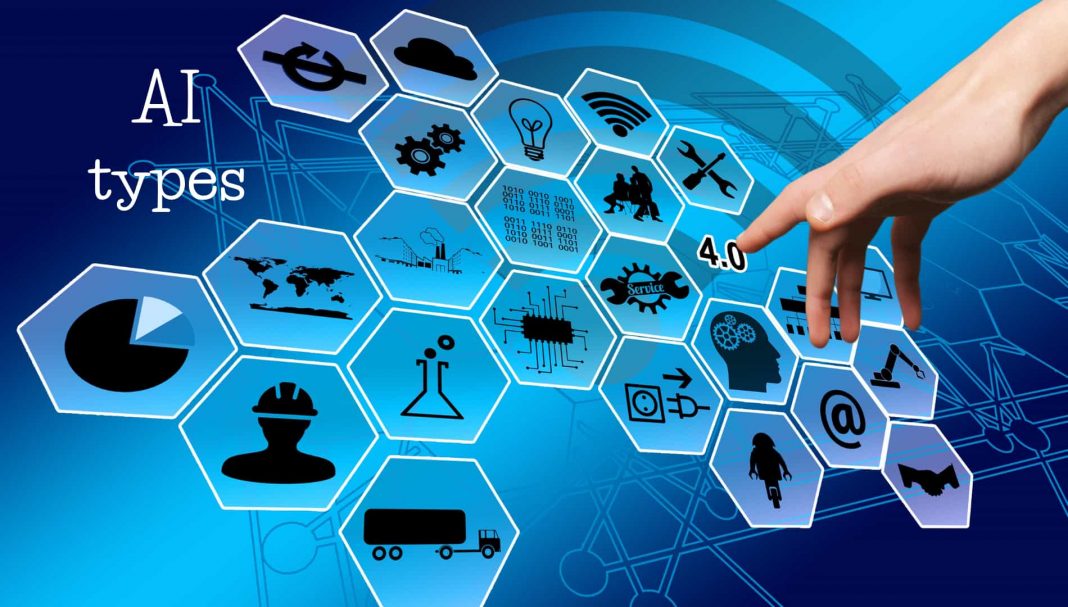Types of artificial intelligence: AI enables a computer system to apply acquired knowledge to new inputs. This ability depends on math and algorithms and applies only to those prepared to perform the technique.
To clarify AI’s concept, you can think of a chatbot whose job is to help restaurant visitors book tables. This chatbot is a computer program trained on tons of booking-table. In the same way, it learns the flow of general conversation on the subject.
After training, ChatBot can chat with customers. However, if a user deviates from a table booking’s main topic and asks for meal recommendations, this chatbot cannot be supported because they did not train to do so.
Types of Artificial intelligence is perhaps the most complex and astonishing creation of humanity. And ignoring the fact that the field is mostly unsustainable, it means that every unique AE application we see today represents just the tip of the iceberg.
Although this fact can state and repeated several times, it is difficult to get a comprehensive view of AI’s potential effects in the future. This is because of the revolutionary impact that AI has on society, even in its relative evolution, even in the early stages.
The rapid development and powerful AI capabilities have made people unfounded about AI tech’s certainty and proximity. The transformation that AI has brought to various industries has made business leaders, and mainstream people understand. I will discuss different types of AI in detail later in the article.
However, it is possible that understanding the types of AI and the classes that are now available will provide a clearer image of the current capabilities of AI and the long road ahead for AI research.
Contents
Different Types of artificial intelligence or Types of AI
There are 4 different types of AI: reactive machines, self-awareness, a theory of mind, and limited memory.
01. REACTIVE MACHINES
The most basic nature of AI systems is purely react-reactive. They have neither the ability to form memories nor use past experiences to communicate current decisions.
Deep Blue, IBM’s chess-playing supercomputer, which defeated international grandmaster Gary Kasparov in the late 1990s, is the best example of such a machine. These all not much furnished with these types of artificial intelligence.
Deep Blue can identify pieces on a chessboard and know how each one moves. It can predict what will happen to him and his opponent. And it can choose the best moves possible.
But it has no idea of the past, nor any memory of what happened before. Dark blue ignores everything before the present moment, except for the rarely used rules against repeating the same action three times. The types of artificial intelligence are also essential to understand. There are different types of AI discuss in detail.
This type of intelligence includes a computer that sees the world directly and acts on what it sees. It does not rely on the inner world. In a seminar paper, AI researcher Rodney Brooks argued that we want to make machines like this.
The main reason for this was that people were not very good at programming the artificial world for computer use, which is called “representation” of the world in AI scholarships. Reactive machines are the first types of artificial intelligence.
There is no such thing in today’s world of intelligent machines that we are amazed at or have a minimal and specialized capacity for their specific tasks. In Deep Blue’s design, innovation was not to extend the range of possible films to be considered on the computer.
Instead, the developers found a way to narrow down their ideas and pursue a potential future move based on their rated results. Without this capability, Deep Blue would need to become an even more powerful computer to defeat Kas Kasparov.
Similarly, Google’s Alphago, which has beaten top Go experts, can’t predict all possible steps in the future. Its analysis method is more sophisticated than that of Deep Blue, using neural networks to measure the game’s progress. There are four different types of AI.
These methods improve the AI system’s ability to play certain games better, but they cannot be easily modified or applied in other situations. These computerized concepts have no concept of the wider world – meaning they cannot work outside of the specific tasks assigned to them and quickly become stupid.
They cannot interact interactively with the world, the way we imagine an AI system could one day. Instead, these machines will behave precisely the same way whenever faced with the same situation. It can be great to make sure the types of artificial intelligence system is reliable.
You want your autonomous car to be a reliable driver. But if we want machines to engage with the world and genuinely respond to them, that’s a bad thing. These most straightforward AI systems will never be boring or exciting or sad.
Also, read more about the Artificial intelligence of things.
02. THEORY OF MIND
We can stop here and make this point an essential division between the machines we have and the machines we manufacture in the future. It is better to be more specific about how devices need to be made and what is necessary about them.
Next, more modern, class machines represent the world and other agents or institutions of the world. In psychology, this is called “theory theory” – the understanding that there may be thoughts and emotions in the world of human beings, creatures, and objects that affect their behavior. Theory of mind is the one types of artificial intelligence that is related to humans.
The thing that makes up the mind is the ability to make decisions that are the size of a human brain but through machines. Although some engines currently display human-like skills (e.g., voice assistants), no one is fully capable of communicating against human standards. One component of human conversation is the emotional capacity.
This future class of machine capabilities will include understanding that people have ideas and emotions that affect the production of behavior, and thus, the “ideology” influences the machine’s thinking process. Social interaction is an essential aspect of the human process.
To stabilize the theoretical devices, the AI systems that control the current hypothetical machines will have to identify, understand, retain, and remember the emotional output and behavior while Finding out how to respond.
If the Types of artificial intelligence system works between us all the time, they need to understand that each of us has feelings and expectations for the way we are treated. Theory of mind is the second types of artificial intelligence or one of the different types of AI.
Read more about the internet of vehicles.
03. LIMITED MEMORY
This type of class has machines that can look at the past. Self-driving cars are already doing some work. They observe the speed and direction. This cannot be done in an instant but needs to be identified and monitored over time.
These observations have been incorporated into the world’s pre-developed representations of self-driving cars, including lane marking, traffic lights, and other vital elements, such as road curves. This all is possible because of these types of artificial intelligence.
When the vehicle decides to change lanes, they join to prevent the other driver from cutting or getting hit by a car. The limited theory is also one of the types of artificial intelligence, which plays a vital role.
How can we develop AI systems that are fully representative, remember their experiences? Brooks was right that this is very difficult to do. My research on the methods developed by Darwin’s evolution can begin to address human shortcomings by allowing machines to make their representations. These machines are different types of AI. Read more about the internet of things and what is the future of IoT?
04. SELF-AWARENESS
The last step in the development of AI is to build systems that can represent themselves. Ultimately, we AI researchers need to understand consciousness and build the machines that it has, and different types of AI.
In a sense, it is the type of the “theory theory” of Types of artificial intelligence. Conscious people are aware of themselves, know their inner state, and present the feelings of others. This all happens because of these types of artificial intelligence of awareness.
Can predict We assume that someone in traffic behind us respects us is angry or restless because that’s how we feel when we respect others. Without a theoretical mind, we cannot make such sources.
Although we may be far from making self-awareness machines, we should focus our efforts on understanding memory, the ability to make decisions based on past experiences. these all advancement is because of these types of artificial intelligence.
This is an essential step in understanding human intelligence itself. If necessary, we want to design or manufacture machines that are more unusual in classifying them than those they see in front of us. These different types of AI machines work perfectly.



















































